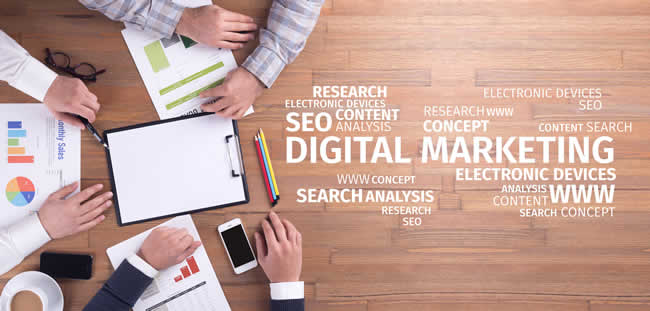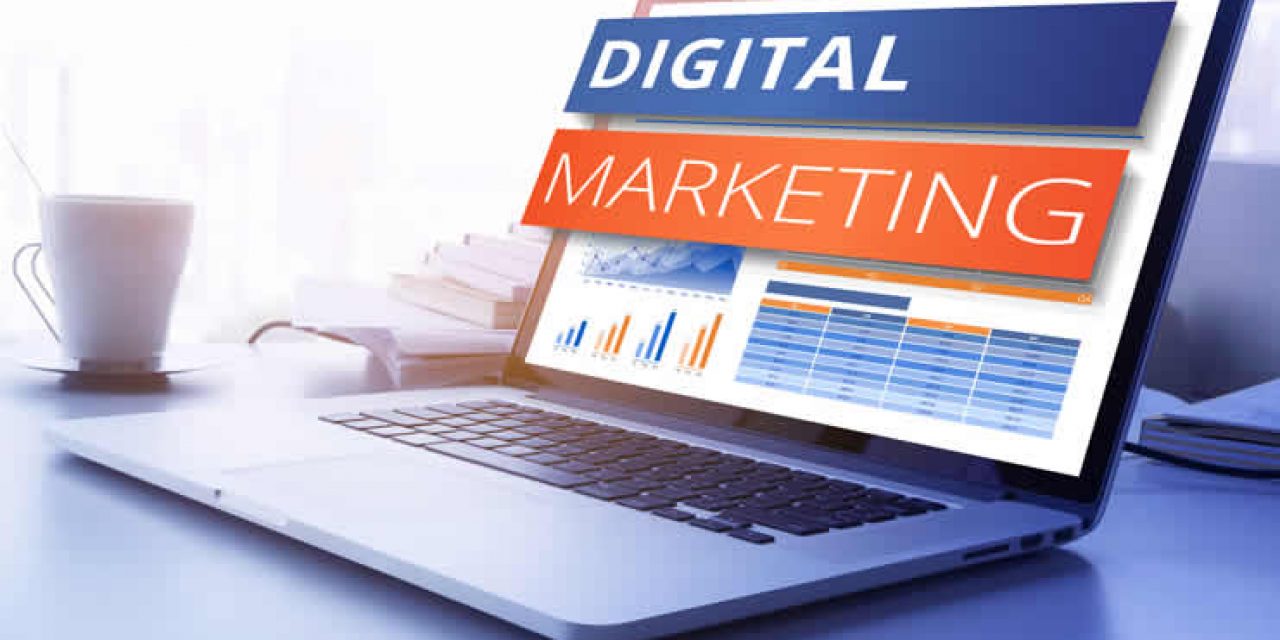Digital marketing is currently the most used term for marketing activities that heavily rely on digital channels, tools, and tactics. Digital marketing is grown out of online marketing, and both are often used interchangeably. Some also still talk about Internet marketing since it’s indeed with the advent of the Internet that we started ‘doing’ online and digital marketing.
In fact, the main Internet applications which businesses and people started to use, particularly the World Wide Web and email, today are still essential in digital marketing. They also gave birth to phenomena such as web design, e-commerce, conversion optimization, online content marketing, search engine optimization, and advertising, online advertising (webvertising), web analytics, and email marketing, to mention some.
As new channels and devices were added and the thinking about online marketing evolved, new forms of digital marketing popped up: mobile marketing, social media marketing, inbound marketing, online influencer marketing, you name it. The advent of new devices such as smartphones and IoT devices also has an impact on how existing digital marketing tactics evolve. This is, among others, driven by the context in which such devices are used, their possibilities, and the purpose they serve.
Moreover, many years ago, digital marketing tactics and ‘offline’ activities started to be combined since people, of course, don’t live in a digital world alone, and distinguishing between online and offline in our lives really is a bit archaic. Marketers started talking about bridging physical and digital worlds, multi-channel marketing, and omnichannel marketing as this occurred. Just marketing would have been easier, but we’re still not there.

Why revisiting the essence of digital marketing matters
Digital marketing today seems far more complicated than it used to be. There are thousands of new tools, and marketing technology (Martech) is omnipresent. There is an increasing proliferation and channels and devices.
People use several channels, devices, and means of interaction across their buying journey, and the overall time they directly or indirectly experience, see or engage with a brand. Customer-facing activities and solutions get combined. Backoffice activities get digitized and aligned with the front office as organizations ‘digitally transform’ with the customer experience in mind. And people continue to adopt ever more digital devices and services which in turn give births to again new tactics, from video marketing to specializations for specific channels/services (Facebook marketing, Instagram, whatever).
The tools marketers use have grown into often complex systems with quite a bit of automation, lots of data coming from different sources and places, and the demanding digital customer isn’t always easy to serve. As a result of all this and more, many organizations tend to get a bit lost in this digital marketing jungle and forget the essence.
That’s also the reason for this ‘back to basics’ of digital marketing article, which should become a series if all goes well. We’re not going to zoom in on why digital marketing efforts often don’t get the results we want, numbers by the hand, for now. We’re not going to look at why so many people are not impressed by ample digital efforts yet. And we won’t zoom in on the latest popular social or other application that is successful among a certain group of people.
What we want to do, however, is help you look at the essence again in times that asking ‘why’ for everything you do will matter more than it used to. Why are you investing in specific tools, channels, and tactics? Why are you creating a piece of content on a particular topic? And so forth.
Looking at the why behind your online marketing actions and what people want you to know
The ‘why’ drives the digital marketing actions that deliver value to your customers, brand, and bottom-line. And to make it work, going back to the essence and getting from behind dashboards and tools will be crucial. Asking the right questions and keeping in mind the human dimension remains key, regardless of channels, tactics, and tools.
It’s clear that in the coming months and years, several digital marketing techniques will be increasingly used by several organizations. It’s been happening for years, and in times of crisis, it is often even more so. Although this isn’t just the case for online marketing, the fact that digital marketing tactics generally lend themselves better for measurement, metrics, and faster – automated – actions, is one of the reasons for this.
Yet, ‘digital,’ data, automation, and digitization alone don’t suffice to build a business and grow a brand over time. As per usual context matters and some companies or even industries can realize more with digital marketing than others.
Regardless of the importance of digital marketing, it’s clear that the ‘physical’ and offline component is important and one must be cautious not to forget that people inform themselves and live in the ‘real world,’ even if ‘digital’ continues to have an increasing role in our lives. Physical means of marketing and advertising such as outdoor displays and ample devices in shops and even our homes are increasingly digitally-enabled as well, making the digital marketing space bigger than ever.
However, shiny new ‘inventions,’ from smart speakers to chatbots, and our focus on big data and technologies often already made us forget that digital marketing is marketing and the basics do matter. We still overlook the fact that behind each email address and set of customer data, there are real people and that it’s essential to look at marketing in a holistic or integrated way.
Adding to the risk of forgetting the essence is the fact that becoming specialized in one or more areas of digital marketing can be quite a challenge and requires much experience. It’s important to have specialists, but you need that holistic approach to keep asking the right questions and making the right choices.
With each different digital marketing channel, we saw a new generation of experts to optimize the impact of marketing via that channel. Yet, marketers have started to realize that you can’t do everything. And you don’t need to.
Go back to basics and understand what your customer wants you to know. Prioritize and focus on the human essence behind digital marketing and marketing in general. And for each tactic, channel, and piece of content you create or action you take, ask ‘why’ and what’s the value.
People are overwhelmed by brands that say they care. They want you to show you care and engage in a valuable and meaningful way. The challenge is to find the proper approach, depending on your goals, budget, and situation, making sure you cover short-term priorities, and you don’t fall in the trap of overlooking the long-term impact of a strong brand. Understand what works for your business and customers and dare to challenge the seemingly obvious and best practices. When making choices and allocating budgets – or reducing them – don’t just ask ‘why’ but also what could perhaps be a better option. Leave room for experimentation even if uncertain times make you go for recipes, which you know. Understand the customer. But also understand the essence of each digital marketing tactic and channel.
As we develop this digital marketing guide, we’ll often go back to the roots of the Internet, the essence of tactics/channels, and why/where they make most sense today. We’ll also look at strategy and core technologies and platforms. Yet, most of all, we’ll point to changing behavior, how people build connections and make decisions and the essence of marketing and branding.
The difference between digital marketing, online marketing, and Internet marketing
Before doing so, a few more words on the terms digital marketing, online marketing, and Internet marketing. Although, in the end, it’s all marketing, we’ll talk about digital marketing henceforth. Are there differences between digital marketing, online marketing, and Internet marketing?
A lot has been written about these topics so we won’t waste too much time on it because it doesn’t really matter that much and ultimately we’ll just talk about marketing. You could say that digital marketing is the umbrella term in a sense. Digital marketing refers to all marketing efforts that use digital channels, devices, platforms, and tools, regardless of whether they are connected to the Internet or not and regardless of place, time, and carrier. Remember those outdoor displays, in-store devices, etc.
Online marketing and Internet marketing are more synonyms since ‘online’ in this context simply means connected to the Internet. And that’s essentially what distinguishes it from digital marketing.
Let’s keep it that simple. You could start debates on all kinds of situations, of course, since digital marketing typically will involve multiple channels and tools, depending on the context. A simple example by way of illustration. What are you doing when using a digital device that captures specific customer data in a store and sends it to an application in the cloud, which then triggers a marketing action via the Internet?
Although we’ll use the term digital marketing, however, our main focus initially will be on online marketing disciplines – and related disciplines that make them work well/better – that form the backbone of most digital marketing strategies. And strategy is the first topic we’ll cover next.
Other terms that were used over time include interactive marketing, in analogy with interactive advertising, possible to interact with (as you can still see in the name of the IAB, acronym for Interactive Advertising Bureau). Other terms, were invented to emphasize that digital marketing enabled more of a dialog and two-way communication whereas several forms of ‘traditional’ marketing and certainly advertising didn’t in the earlier days of the Internet.
Engaging with a print ad indeed wasn’t and isn’t that easy. That two-way dimension became even more emphasized with the advent of social media and other channels/tools enabled by so-called Web 2.0 technologies. All of the sudden people became ’empowered’ as the story goes but of course other digital and non-digital channels and devices in reality enabled a ‘dialog’. Today the interactive and two-way aspect are stressed less since it’s pretty much possible everywhere and the discourse shifted to data-driven and automated marketing. But that’s another story and that’s it for terminology.






